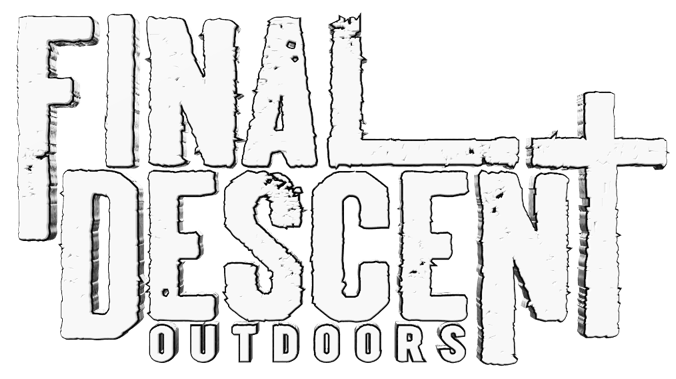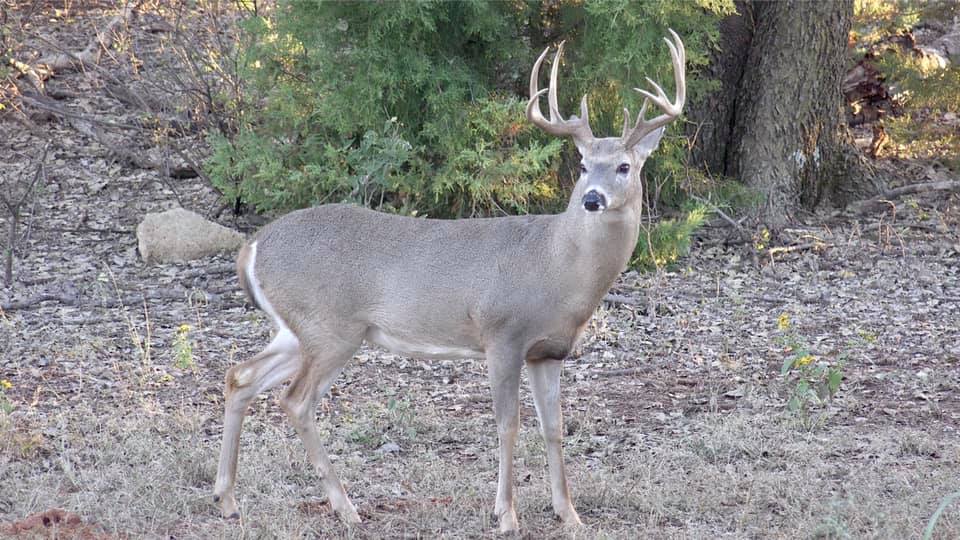Attraction and Distraction: Hunting Mineral Sites
Staffer Trenton Gaines arrowed this Texas panhandle buck coming to Buck Blitz on October 13th, 2018.
Hunting mature bucks often crowd my thought bubble. However, if you were to actually tap into that bubble, you’d see large-antlered deer, regardless of age. Lots of them. For me, the preoccupation is a year-round affair. Therefore, I find myself always putting in work with the goal of encountering such animals in the fall and winter. I know I’m not alone here and come springtime, many whitetail hunters will establish or renew mineral sites throughout their hunting grounds. I know firsthand that, once established, deer hit them hard.
Before we go any further, let me give the obligatory warning to educate yourself on your state’s game laws regarding the use of minerals. In some states, it’s illegal to provide minerals to deer any time of the year. In other states, it’s simply illegal to hunt over them.
There are a few reasons to maintain mineral stations including whitetail nutrition, attraction, scouting, and antler development. The latter, however, often results in over-inflated hopes of overnight increases in antler size. While, from a health standpoint, whitetails need nutritional supplementation in the spring and summer, there is no guaranty of any quick turnaround in antler growth. There are simply too many other variables involved, including area genetics and rainfall. Nonetheless, during the spring and summer, deer do need to maintain the minerals and salts in their bodies. While mineral sites may or may not result in large headgear, they still fill a nutritional need. Even on a small tract where it can be darn near impossible to manage for genetics, mineral supplementation will still enhance herd health. The cool thing is that, when used as an attractant, we can leverage it as hunters.
The Benefits of Mineral Site Attraction
Inventory. It’s no secret that trail cameras can help inventory the bucks in our hunting areas. Mineral sites are just another way to aid in the process. Put cameras on them. Not exactly an earth-shattering notion, I know. The resulting snapshots are valuable at all times. This includes summer footage of velvet-laden bucks, the hard antler period, and even the late winter and spring when bucks are devoid of antlers at all. It’s all good intel.
Long-Term Go-to Spots. Like food plots and feeders, a well-established mineral station can draw deer to desired locations. Whitetails are intelligent, but are still creatures of habit and will return time and time again to mineral-rich soil; especially if it’s refreshed adequately and often. Even where it’s illegal to hunt over them, you can draw them into optimal pastures or sections of timber; sometimes during precious daytime hours.
Setting up on Them. As game and habitat managers, most hunters will still admit that the end goal is shooting a big buck. With that in mind, it’s important to maximize daylight encounters with said buck(s). This means finding locations where deer are most likely to move during the day. Good choices for stations are near bedding areas, consistent rubs, and funnels. Though you want to avoid over-pressuring a buck’s master suite, use game cameras to help narrow down their locations. Start on the outskirts and carefully work your way in.
Western Oklahoma bucks eating Buck Blitz in July of 2018.
Hunting at a Granular Level
It’s no secret that deer often decrease their visits to mineral sites during the season. For one, alternative food sources like plots and acorns become more prevalent during the fall. Also, vegetation typically holds less water, meaning a lesser need for a sodium source. However, for bowhunting, in particular, mineral stations are great alternatives for early-season sits. If legal in your state, these sites are great for taking advantage of the tail end of the summer-early fall movement patterns. This means that even visits from bachelor groups of bucks are not out of the question. Suffice to say, it never sucks to have encounters with 2 or more bucks during a bow sit.
Creating Patterns
Behavior modification. When effective, there’s something liberating about it! Everything from teaching a dog to work the birds or potty-training a child. Employing mineral stations to reinforce optimal deer travels is a powerful practice. One of my favorites is using them as a staging area by placing them between sanctuaries and food sources. And near bow set-ups. If you’re not allowed to hunt over them, use them to do a little positive reinforcement. If you’re not allowed to use them at all, well, that’s a shame. You might be surprised at the correlation between whitetail movements from Spring and Summer to Fall. At a minimum, think of the possible benefits of doe groups replicating their offseason patterns during the fall, not to mention the rut.
Trenton Gaines recovered his Texas panhandle buck 60yds from his blind.
Create a Diversion
Finally, if legal in your state, consider locating stations within bow range, but obstructed by clumps of brush or other structure. If you are able to coax deer in to feed comfortably, quality shot opportunities arise as they exit the barrier. Again, this is especially effective during the early days of bow season before mature buck movement patterns change.
Again, nutrition aside, I suspect that most hunters use mineral sites as a means of ultimately arrowing a slobber-knocker buck. If you don’t already do so, embrace the unorthodox and literally hunt near the mineral-rich soil that you’ve worked so hard to create; and frankly, sunk money into. In the spirit of stacking your arsenal, why not? Just like mock scrapes and rub lines, mineral licks represent a great solicitation. While they should be used as just one part of a nutritional regimen, they can play a direct role in the kill.
Based in Texas, Jerald Kopp is President of 1st Light Hunting Journal. His content is largely about hunting strategies and the outdoor lifestyle – often from a Christian perspective. Jerald is an avid outdoorsman with deer hunting and whitetails being by far his greatest passion. In 2005, he established the Empowerment Outfitter Network (EON) – a faith-based non-profit organization that provides hunting opportunities for disabled and terminally-ill children and youth. When not hunting, he spends his time traveling and enjoying life with Amy, his wife of 30 years. Jerald and Amy have two adult daughters and a son-in-law.




